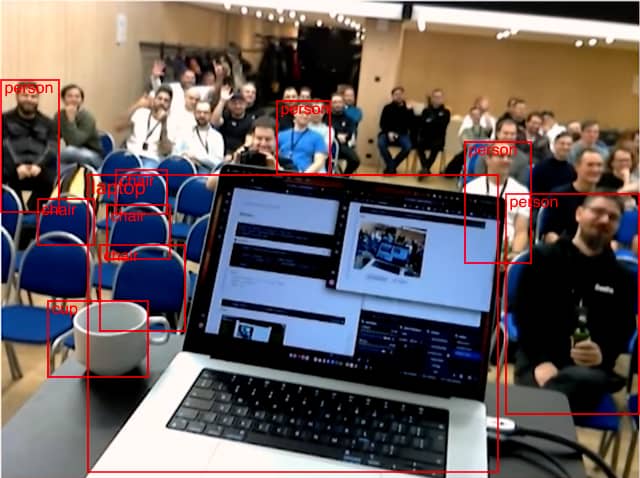I have not tinkered that much with it, just tried to get image to run on the RPi4 
❯ mix compile
==> vix
make[1]: Entering directory '/home/kwando/vix_test/deps/vix/c_src'
** (CaseClauseError) no case clause matching: {"armv7l", "linux", "gnueabihf"}
/home/kwando/vix_test/deps/vix/build_scripts/precompiler.exs:39: Vix.LibvipsPrecompiled.cast_target/1
/home/kwando/vix_test/deps/vix/build_scripts/precompiler.exs:30: Vix.LibvipsPrecompiled.url/2
/home/kwando/vix_test/deps/vix/build_scripts/precompiler.exs:16: Vix.LibvipsPrecompiled.fetch_libvips/0
(elixir 1.12.3) lib/code.ex:1261: Code.require_file/2
make[1]: *** [Makefile:84: /home/kwando/vix_test/_build/dev/lib/vix/priv/precompiled_libvips] Error 1
make[1]: Leaving directory '/home/kwando/vix_test/deps/vix/c_src'
make: *** [Makefile:5: all] Error 2
could not compile dependency :vix, "mix compile" failed. You can recompile this dependency with "mix deps.compile vix", update it with "mix deps.update vix" or clean it with "mix deps.clean vix"
==> vix_test
** (Mix) Could not compile with "make" (exit status: 2).
You need to have gcc and make installed. If you are using
Ubuntu or any other Debian-based system, install the packages
"build-essential". Also install "erlang-dev" package if not
included in your Erlang/OTP version. If you're on Fedora, run
"dnf group install 'Development Tools'".
kwando@pi 10.0.0.7 ~/vix_test took 4s
❯ mix hex.info
Hex: 2.0.6
Elixir: 1.12.3
OTP: 24.1.3
mix.lock
%{
"castore": {:hex, :castore, "0.1.22", "4127549e411bedd012ca3a308dede574f43819fe9394254ca55ab4895abfa1a2", [:mix], [], "hexpm", "c17576df47eb5aa1ee40cc4134316a99f5cad3e215d5c77b8dd3cfef12a22cac"},
"cc_precompiler": {:hex, :cc_precompiler, "0.1.7", "77de20ac77f0e53f20ca82c563520af0237c301a1ec3ab3bc598e8a96c7ee5d9", [:mix], [{:elixir_make, "~> 0.7.3", [hex: :elixir_make, repo: "hexpm", optional: false]}], "hexpm", "2768b28bf3c2b4f788c995576b39b8cb5d47eb788526d93bd52206c1d8bf4b75"},
"elixir_make": {:hex, :elixir_make, "0.7.6", "67716309dc5d43e16b5abbd00c01b8df6a0c2ab54a8f595468035a50189f9169", [:mix], [{:castore, "~> 0.1 or ~> 1.0", [hex: :castore, repo: "hexpm", optional: true]}], "hexpm", "5a0569756b0f7873a77687800c164cca6dfc03a09418e6fcf853d78991f49940"},
"image": {:hex, :image, "0.27.0", "f1bc493fc2abe48a530292dbfc11bd2bbd00ab95289b46c47f096fafd3a4ec40", [:mix], [{:bumblebee, "~> 0.2", [hex: :bumblebee, repo: "hexpm", optional: true]}, {:evision, "~> 0.1.26", [hex: :evision, repo: "hexpm", optional: true]}, {:exla, "~> 0.5", [hex: :exla, repo: "hexpm", optional: true]}, {:jason, "~> 1.4", [hex: :jason, repo: "hexpm", optional: true]}, {:kino, "~> 0.7", [hex: :kino, repo: "hexpm", optional: true]}, {:nx, "~> 0.5", [hex: :nx, repo: "hexpm", optional: true]}, {:phoenix_html, "~> 2.14 or ~> 3.2", [hex: :phoenix_html, repo: "hexpm", optional: false]}, {:plug, "~> 1.13", [hex: :plug, repo: "hexpm", optional: true]}, {:sweet_xml, "~> 0.7", [hex: :sweet_xml, repo: "hexpm", optional: false]}, {:vix, "~> 0.15", [hex: :vix, repo: "hexpm", optional: false]}], "hexpm", "93d3383296dd2b1a0a18903b184e519e846e387943a83e3713b2b26ee7e3cec1"},
"phoenix_html": {:hex, :phoenix_html, "3.3.1", "4788757e804a30baac6b3fc9695bf5562465dd3f1da8eb8460ad5b404d9a2178", [:mix], [{:plug, "~> 1.5", [hex: :plug, repo: "hexpm", optional: true]}], "hexpm", "bed1906edd4906a15fd7b412b85b05e521e1f67c9a85418c55999277e553d0d3"},
"sweet_xml": {:hex, :sweet_xml, "0.7.3", "debb256781c75ff6a8c5cbf7981146312b66f044a2898f453709a53e5031b45b", [:mix], [], "hexpm", "e110c867a1b3fe74bfc7dd9893aa851f0eed5518d0d7cad76d7baafd30e4f5ba"},
"vix": {:hex, :vix, "0.16.2", "1d18624c51a12ccd9042e263ba5b9145f4f6b06042d5f7fb170667f7e3bff42b", [:make, :mix], [{:castore, "~> 0.1", [hex: :castore, repo: "hexpm", optional: false]}, {:cc_precompiler, "~> 0.1.4 or ~> 0.2", [hex: :cc_precompiler, repo: "hexpm", optional: false]}, {:elixir_make, "~> 0.7.3 or ~> 0.8", [hex: :elixir_make, repo: "hexpm", optional: false]}, {:kino, "~> 0.7", [hex: :kino, repo: "hexpm", optional: true]}], "hexpm", "2c62dd442515641967e6286785785983256315e59aa1e8f29b3365d6854f7a11"},
}
The build-essential package is installed 
❯ which gcc
/usr/bin/gcc
❯ which make
/usr/bin/make





















